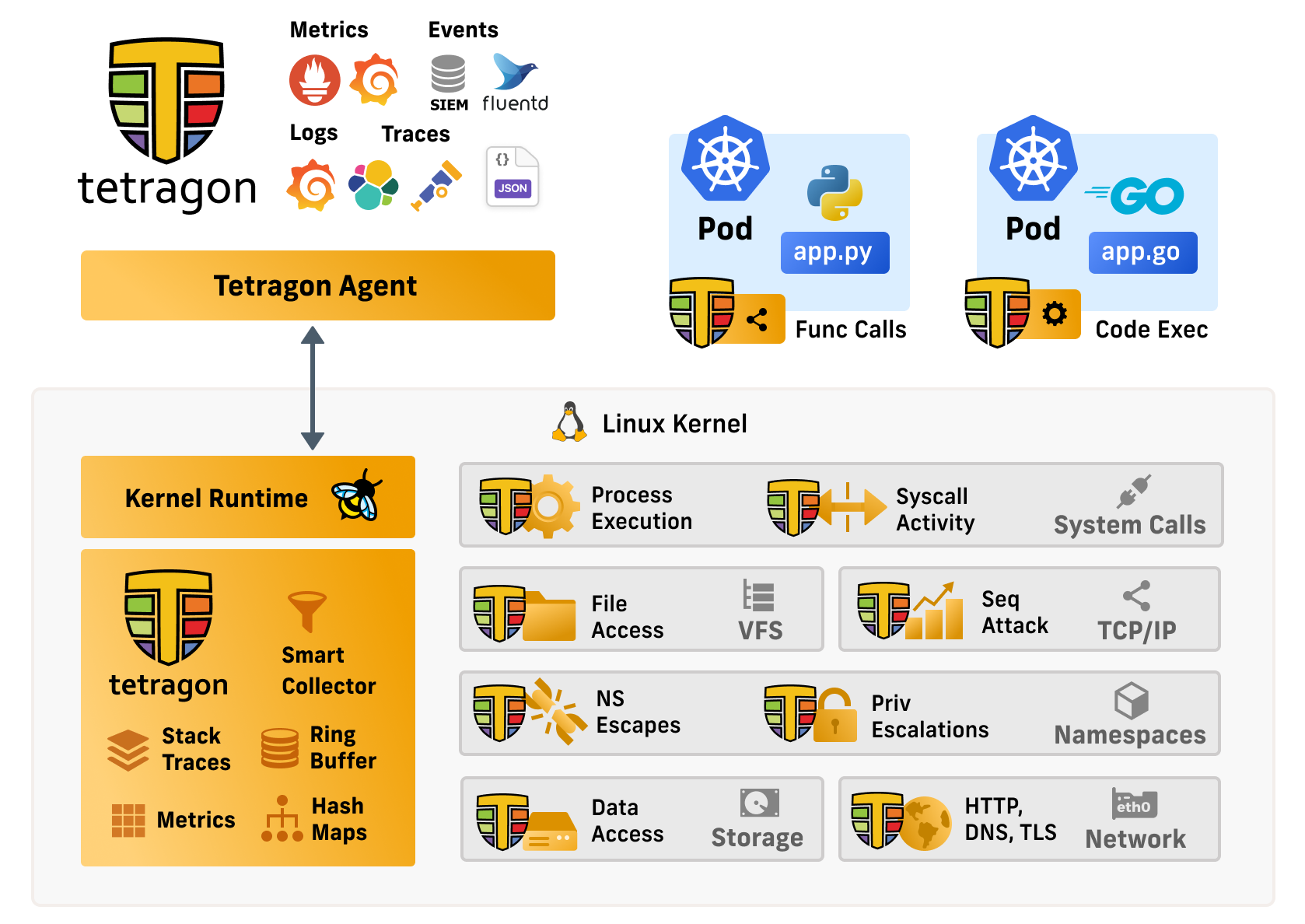Overview
Cilium Tetragon component enables powerful realtime, eBPF-based Security Observability and Runtime Enforcement.
Tetragon detects and is able to react to security-significant events, such as
- Process execution events
- System call activity
- I/O activity including network & file access
When used in a Kubernetes environment, Tetragon is Kubernetes-aware - that is, it understands Kubernetes identities such as namespaces, pods and so-on - so that security event detection can be configured in relation to individual workloads.

Tetragon Overview Diagram
Functionality Overview
eBPF Real-Time
Tetragon is a runtime security enforcement and observability tool. What this means is Tetragon applies policy and filtering directly in eBPF in the kernel. It performs the filtering, blocking, and reacting to events directly in the kernel instead of sending events to a user space agent.
For an observability use case, applying filters directly in the kernel drastically reduces observation overhead. By avoiding expensive context switching and wake-ups, especially for high frequency events, such as send, read, or write operations, eBPF reduces required resources. Instead, Tetragon provides rich filters (file, socket, binary names, namespace/capabilities, etc.) in eBPF, which allows users to specify the important and relevant events in their specific context, and pass only those to the user-space agent.
eBPF Flexibility
Tetragon can hook into any function in the Linux kernel and filter on its arguments, return value, associated metadata that Tetragon collects about processes (e.g., executable names), files, and other properties. By writing tracing policies users can solve various security and observability use cases. We provide a number of examples for these in the repository and highlight some below in the ‘Getting Started Guide’, but users are encouraged to create new policies that match their use cases. The examples are just that, jumping off points that users can then use to create new and specific policy deployments even potentially tracing kernel functions we did not consider. None of the specifics about which functions are traced and what filters are applied are hard-coded in the engine itself.
Critically, Tetragon allows hooking deep in the kernel where data structures can not be manipulated by user space applications avoiding common issues with syscall tracing where data is incorrectly read, maliciously altered by attackers, or missing due to page faults and other user/kernel boundary errors.
Many of the Tetragon developers are also kernel developers. By leveraging this knowledge base Tetragon has created a set of tracing policies that can solve many common observability and security use cases.
eBPF Kernel Aware
Tetragon, through eBPF, has access to the Linux kernel state. Tetragon can then join this kernel state with Kubernetes awareness or user policy to create rules enforced by the kernel in real time. This allows annotating and enforcing process namespace and capabilities, sockets to processes, process file descriptor to filenames and so on. For example, when an application changes its privileges we can create a policy to trigger an alert or even kill the process before it has a chance to complete the syscall and potentially run additional syscalls.
What’s next?
- Getting Started Get started with Tetragon.
- Concepts: Learn about Tetragon events.